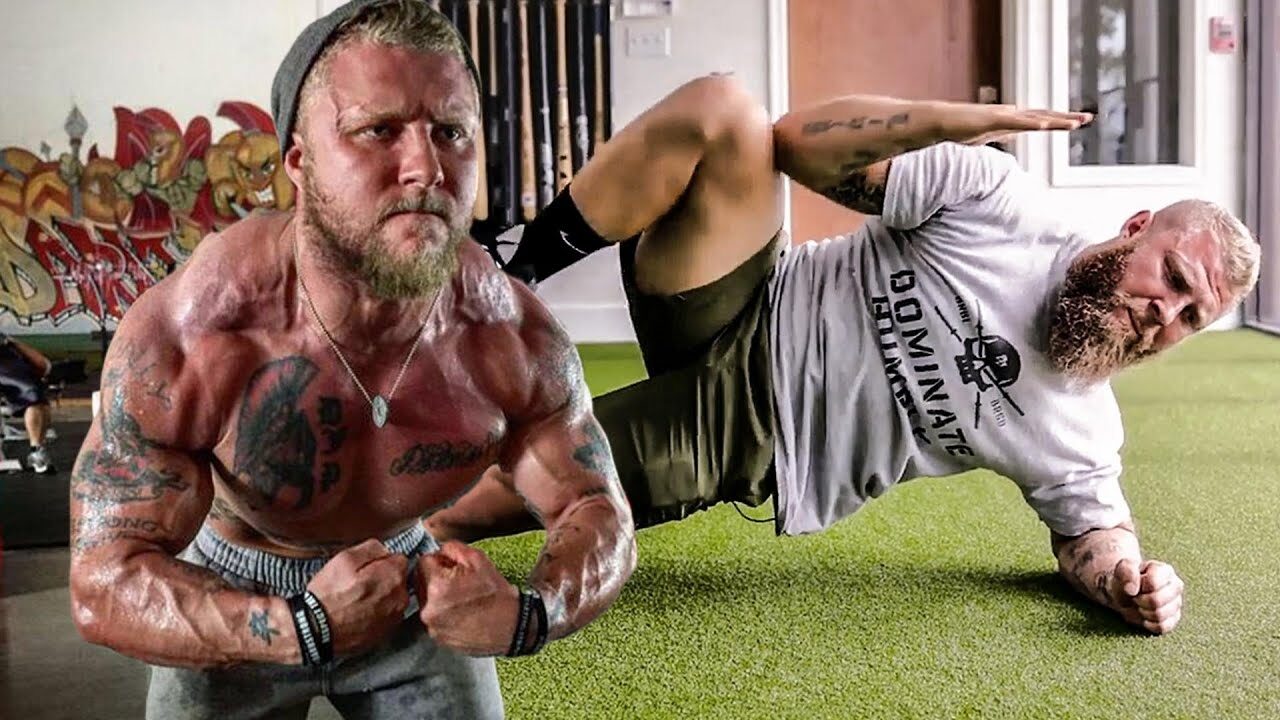- MMA & Combat Sports
5 Ways to Increase Your Punching Power At Home
- By Phil Daru
- On May 19, 2021
5 Ways to Increase Your Punching Power At Home
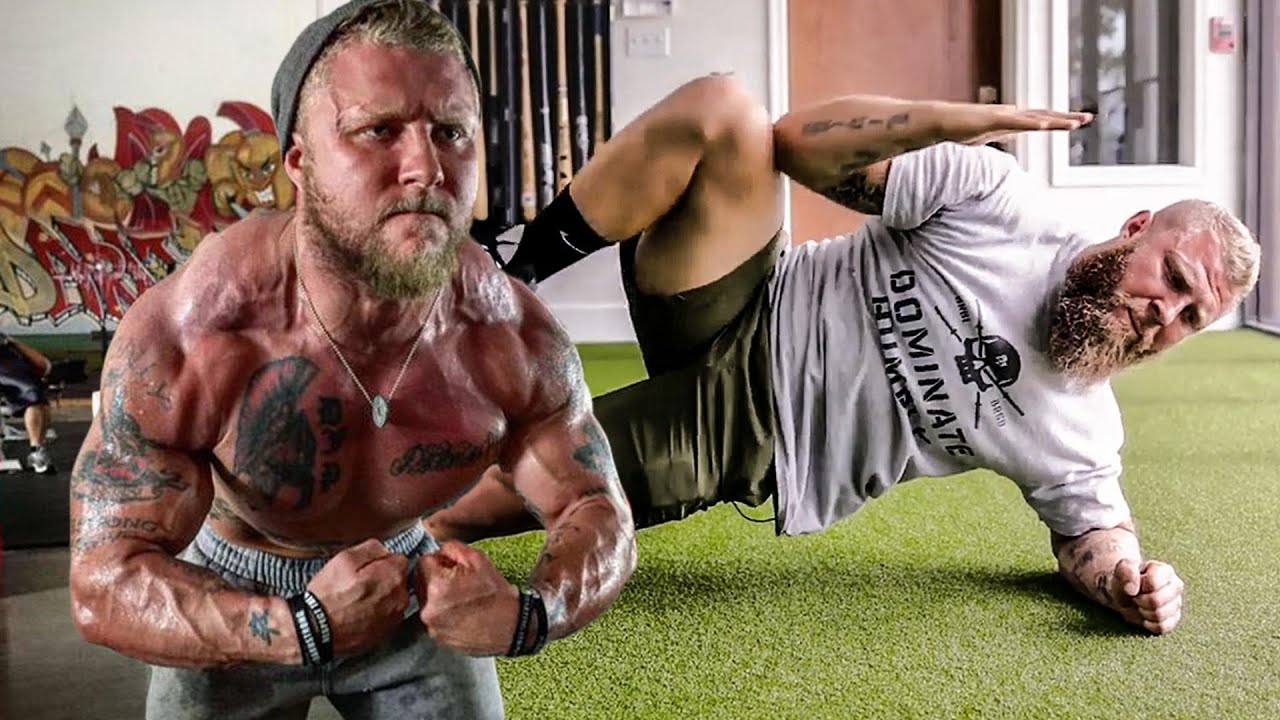
Serious athletes should always be finding ways to perfect their craft, no matter what tools they have at their disposal.
I remember back when all sports were cancelled, I saw a post of an MLB player who set up a batting cage in his apartment. Yes… In his apartment. You could see the skyline through his windows.
Many other athletes made similar adjustments. And that’s because they know they need to continually progress. If you’re not progressing, you’re getting worse.
On this note, today I want to share 5 ways to increase your punching power at home, little to no equipment required. So whether you have a gym membership or not, it doesn’t matter. You don’t have any excuses after reading this post.
Let’s get into it.
1. Core Training
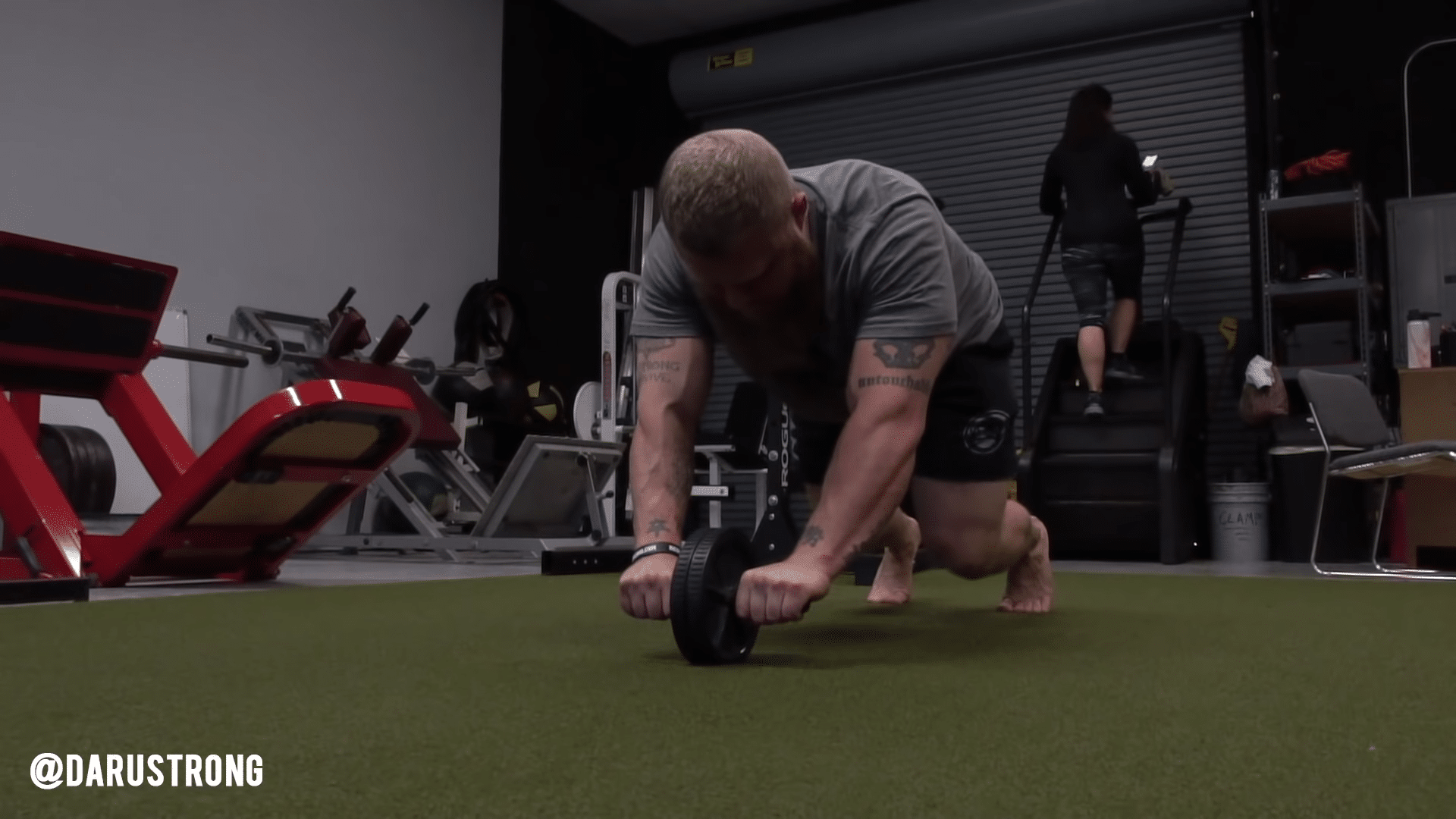
The first, and most simple, way to increase your punching power at home is to do something everyone who’s serious about combat sports should be doing – training their core. The core is the bridge for your punching power. Every time you load up to throw a knockout punch, toss out a jab, or throw a devastating overhand, high amounts of force are being transferred through the core.
Your ability to keep your core stable determines how much force you maintain, and ultimately, how powerful your punches will be.
There are five components of core training that you should account for if you want to increase your punching power at home. Let’s go into them:
Stability
We already touched on core stability and its importance for your punching power, but how do you develop core stability? A great way to build a base of core stability is with isometric holds. Isometric holds are performed when tension is kept on the muscle or muscles without a change in length.
And because the core consists of a variety of muscles (like the transverse abdominis, obliques, and erectors), we need to perform isometric core exercises that target all of these areas. Luckily, this isn’t rocket science. Begin with simple movements like planks, prone cobras, and side planks. Once you get good at those, begin to progress them by decreasing the stability you have in those positions, adding some movement, or adding some other variation.
Anti-Rotation/Rotation
Every time you throw a punch, or even a kick, you’re generating force using torque. Part of this torque is produced through the rotation of the core, specifically the oblique muscles. That’s where rotational core exercises and ballistics come in. Movements like Russian twists, barbell windshield wipers, medicine ball side tosses, medicine ball throws, and more can develop the rotational ability of the core.
But not only do you want the ability to rotate to produce force, but you also want the ability to resist rotation so you don’t over-rotate or get out of position.
That’s anti-rotational movements come in. Anti-rotational movements support your ability to RESIST rotation. Some of my favorite anti-rotation movements include Pallof press, suitcase carries, and bird dogs.
Flexion
Flexion of the core occurs when the sternum increases in proximity to the hips. The muscles responsible for core flexion, like the rectus abdominis and obliques, also play key roles in throwing powerful punches. That said, we’ll want to build up these muscles to ensure we build a sturdy core that supports powerful punches.
Some of my favorite trunk flexion exercises include sprinter sit-ups, v-ups, and Heisman’s.
Extension
Extension occurs when the muscles of the posterior chain (back side of your body) contract. The main muscles responsible for trunk extension are the erectors, as well as the glutes. These muscles are important for punching power because they allow you to maintain good posture as well as play a role in helping you achieve hip extension.
Some of my favorite movements for trunk extension are prone cobras and bird dogs.
Want to see a list of my favorite core exercises for MMA performance? Click here.
2. Shadow Boxing
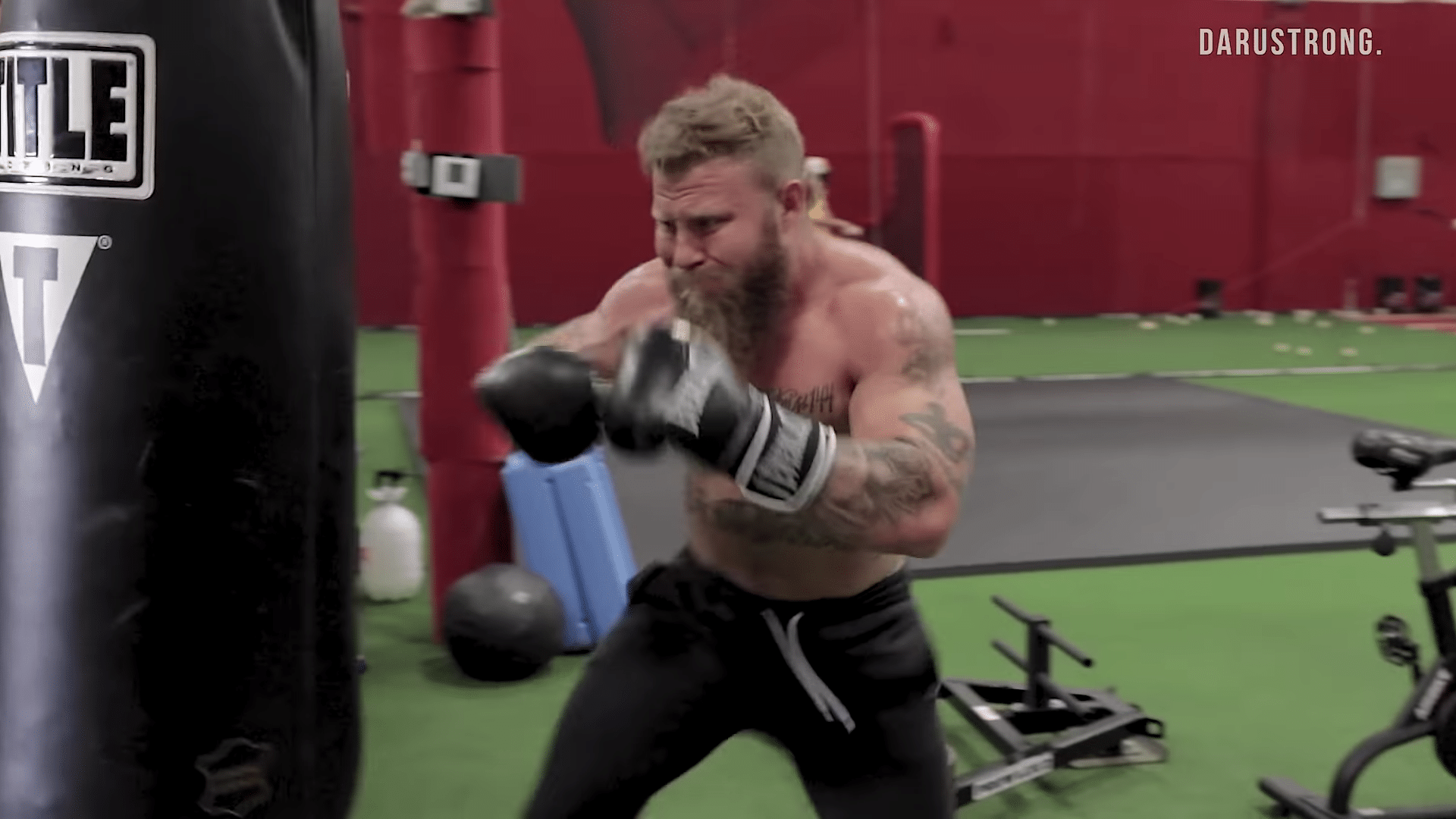
Trying to throw powerful punches with poor punching technique is like trying to shoot a cannon out of a canoe. That’s why the FIRST thing you should address before you try any other method to increase your punching power is develop rock-solid technique that’s second-nature to you.
When I say technique, I’m not only referring to your punching technique, but also your footwork. Your footwork plays a key role in your positioning. And good positioning is what gives you the opportunity to throw powerful punches.
If you don’t know how to shadow box with technique in mind, check out this video I made with my associate, Maureen Shea. She’s a two time world champion boxer, and her technique, footwork, and positioning is tighter than most boxers out there.
Either way, setting some time aside for some technique-focused, intentful shadow boxing is a great way to increase your punching power at home.
3. Stretch, Mobilize, and Activate

Fighters are plagued by muscle imbalances. And these muscle imbalances can wreak havoc on the body if you leave them unattended.
These muscle imbalances occur due to pattern overload. Pattern overload is caused by performing repeated movements over and over. And there’s no sport that requires this more than MMA or boxing. Constantly punching, throwing kicks, staying in that fight stance – all of that contributes to muscle imbalances in the shoulders, hips and more.
If you want to unlock your true power potential, you have to attack these imbalances to unlock healthy ranges of motion.
The common problem areas occur in the pectorials, anterior deltoids, hip flexors, and neck. These areas should be stretched regularly to reduce the tension in these areas.
Once you’ve unlocked new ranges of motion in these areas with stretching, there’s a critical next step you must follow. See, many athletes stop at stretching their muscles. Stretching is great for unlocking new ranges of motion, but these new ranges of motion are no use if you haven’t built strength in these ranges.
That’s where mobility exercises come in. Mobility exercises are the means by which you can build strength in new ranges of motion. I’ll share a few of them in a moment.
The last step in this equation is activation.
Muscle imbalances cause some muscles to be tonic and overactive. These are the muscles we stretched in step one. Other muscles need to be activated, as they’ve had their function interrupted by the overactive muscles.
Below, I’m going to share a handful of my favorite mobility and activation movements for fighters you can use to increase your punching power at home:
Shoulder CAR
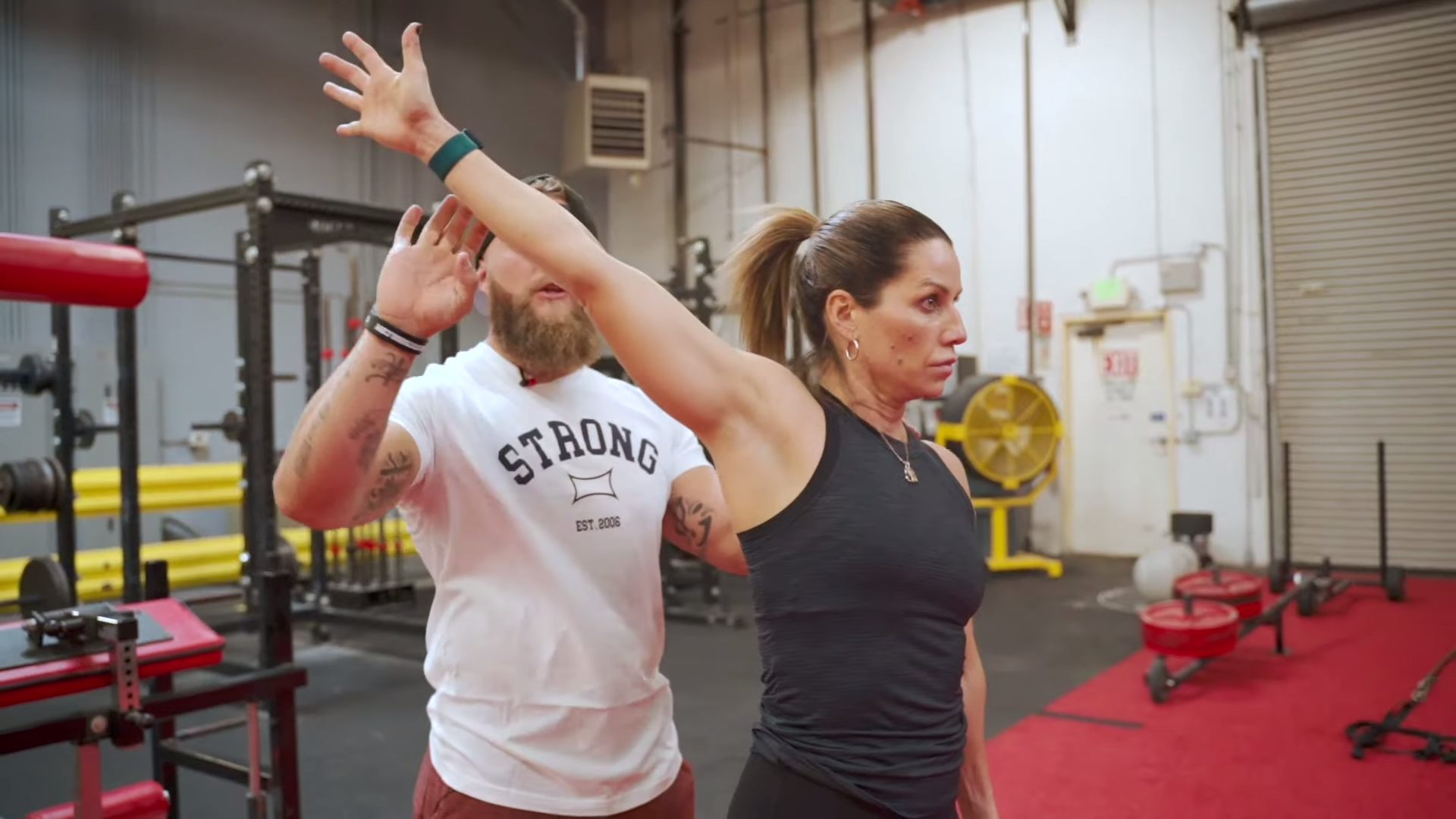
Controlled articular rotations (CARs) are some of my favorite movements to unlock new ranges of motion while increasing control in those new ranges of motion. You can perform CARs for any joint, but I usually attack the hips and shoulders with CARs, as they’re the typical problem areas.
Here’s How to Perform Shoulder CARs:
- Stand tall with the core tight and glutes contracted
- Lift one arm straight out in front of you with the shoulder protracted
- Without shrugging the shoulder or compromising the abs or glutes, lift that hand overhead
- Flip the palm and internally rotate the hand as you bring your arm behind you, stopping at your hip
- Reverse the process and end in your starting position
- Repeat for desired reps on both sides
Band Pull Aparts (Beginner and Advanced)
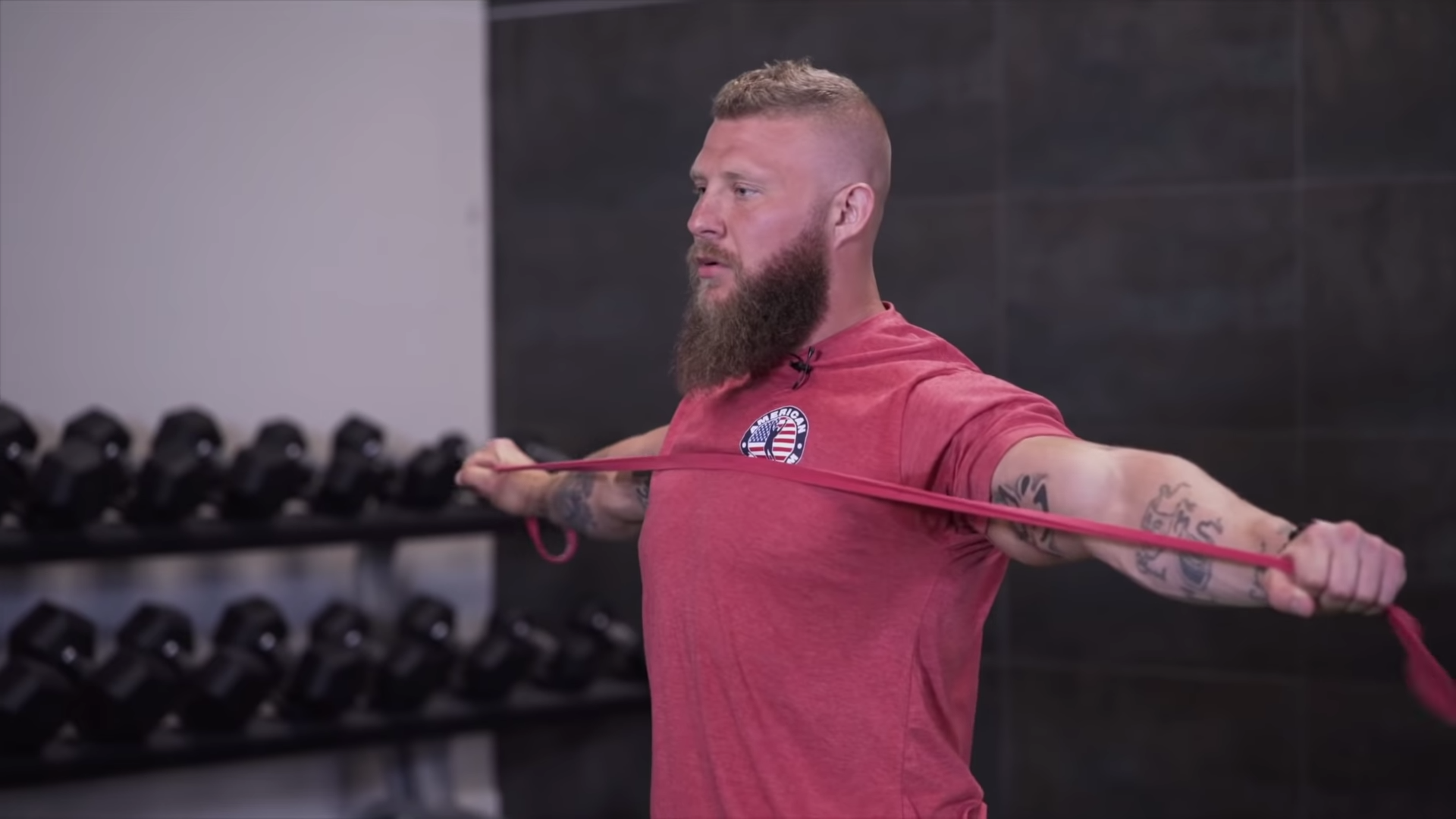
As I mentioned above, fighters are commonly weak in the upper back. Band pull aparts are one of my favorite tools to activate and build those commonly weak muscles of the upper back.
You can perform band pull aparts with a pronated or supinated grip. You can also add shoulder protraction at end portion of the movement to make it more advanced.
Here’s How to Perform Band Pull Aparts:
- Grab a resistance band with your hands at the appropriate width. The closer your hands are, the harder it will be. The farther, the easier
- Keep your chest up tall, core tight, and glutes squeezed
- Squeeze your shoulder blades together and pull the band right under your chest
- Slowly return to the starting position (add a protraction for the more advanced version)
- Repeat for desired reps
Prone Swimmers
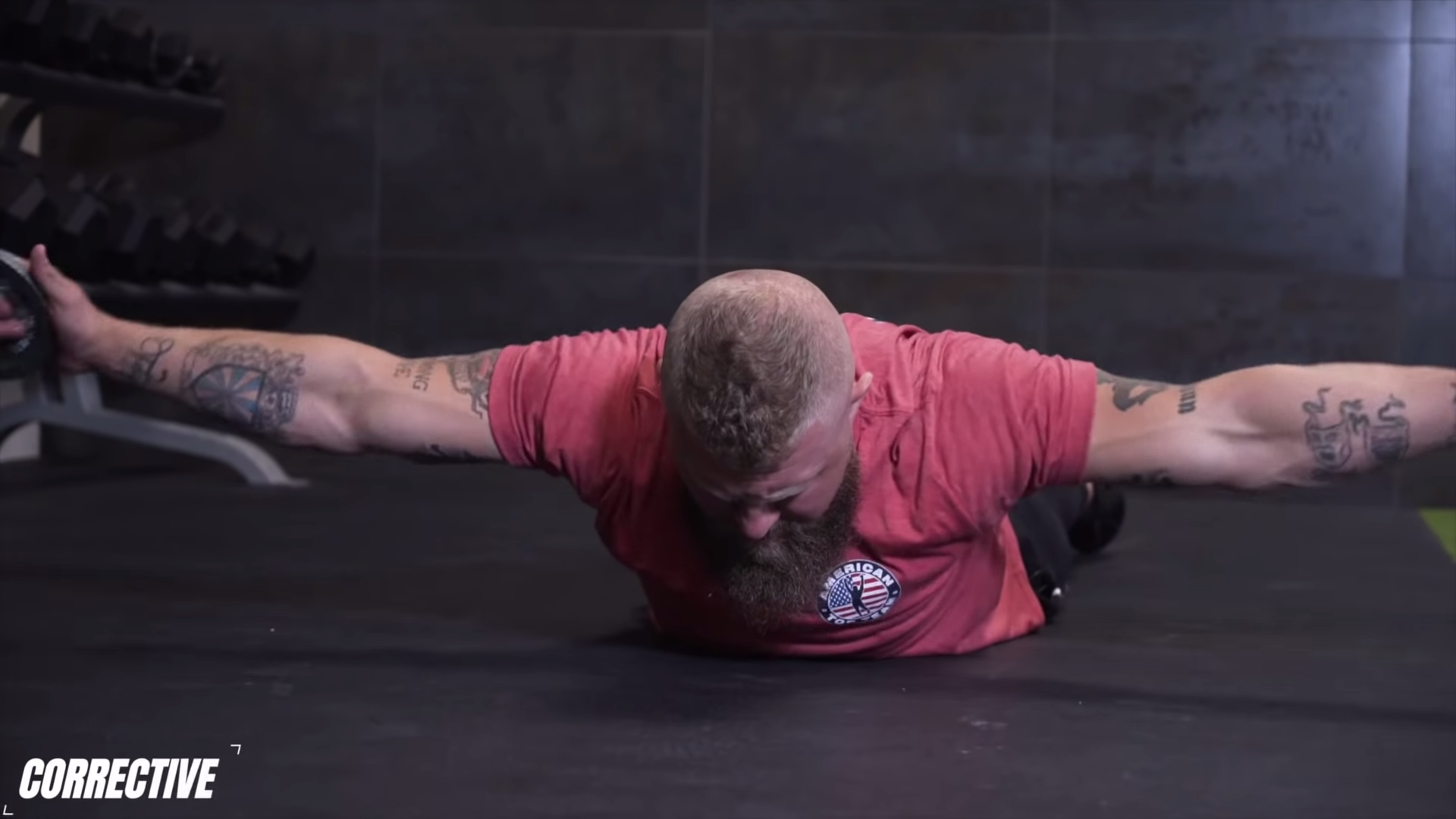
Weighted prone swimmers serve as a quasi-mobility and activation exercise. While they do unlock new ranges of motion in the shoulder AND increase the athlete’s control in those positions, the movement also activates and builds the muscles of the upper back. It’s an absolute must for any fighter serious about their performance.
Here’s How to Perform Prone Swimmers:
- Start on your stomach with a 2.5 pound plate in each hand
- Keeping the chest up and chin tucked, lift your arms off the ground straight in front of you
- Keeping the arms as straight as possible, slowly bring the hands towards the hips
- As you do, internally rotate the hands
- End with both hands over top of the glutes, then reverse the movement
- Repeat for desired reps
4. Resistance Bands
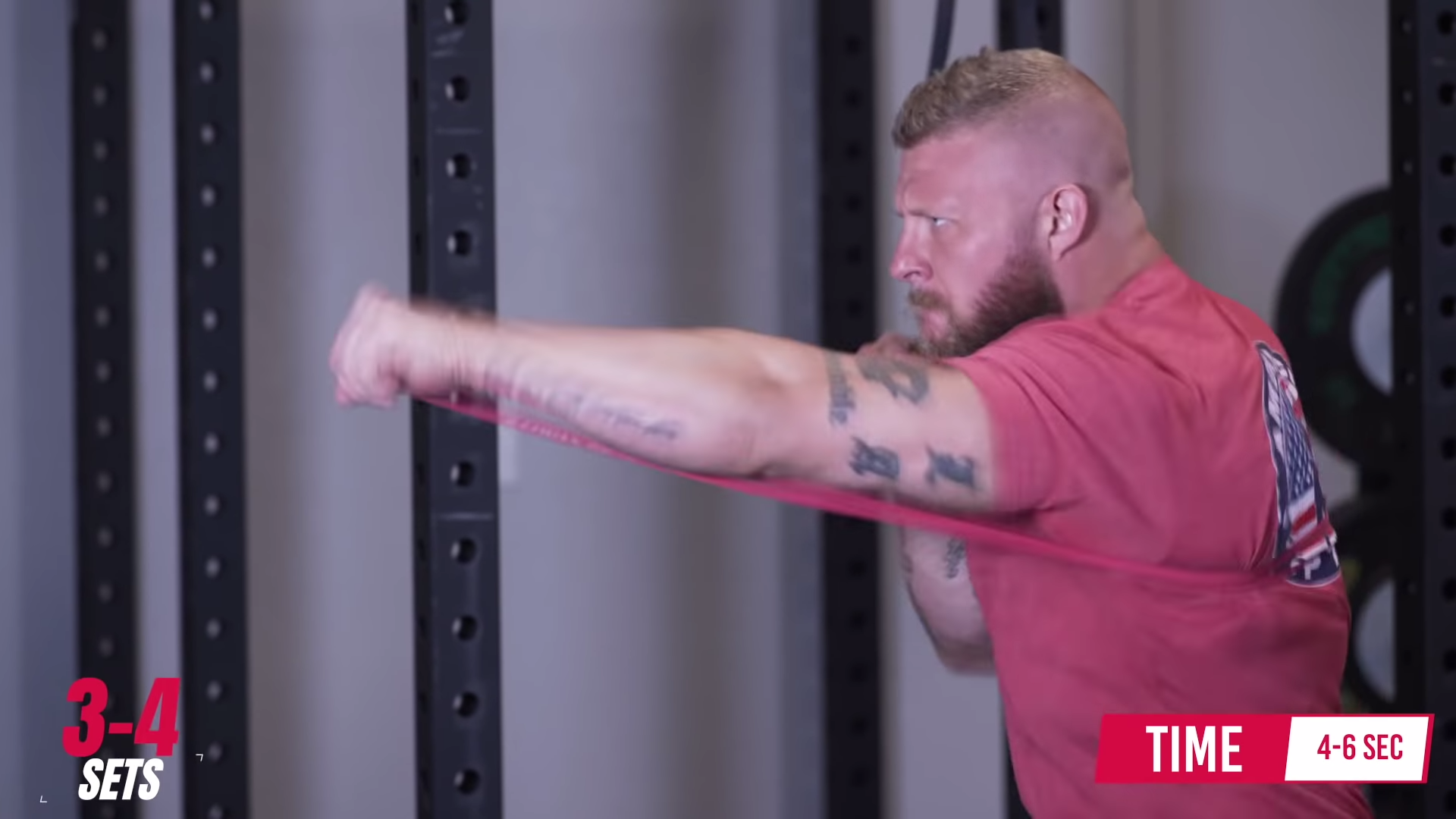
If you want to increase your punching power at home, resistance bands are a must-have. Resistance bands are one of my favorite tools to increase punching power and speed.
Why?
Punching with resistance bands delivers a storm of benefits to fighters. For one, they act as accommodating resistance. Accommodating resistance is a tool that makes the movement equally difficult through the full range of motion. In the case of punching, resistance bands add accommodating resistance at the end range of your punch.
This can also help your technique, as you’ll learn to fully lockout your punches.
Resistance bands can also be used to increase mobility, build the muscles of the upper back, and hammer away at imbalances in general.
If you’re serious about fighting, get your hands on a set of quality resistance bands.
5. Bodyweight Training
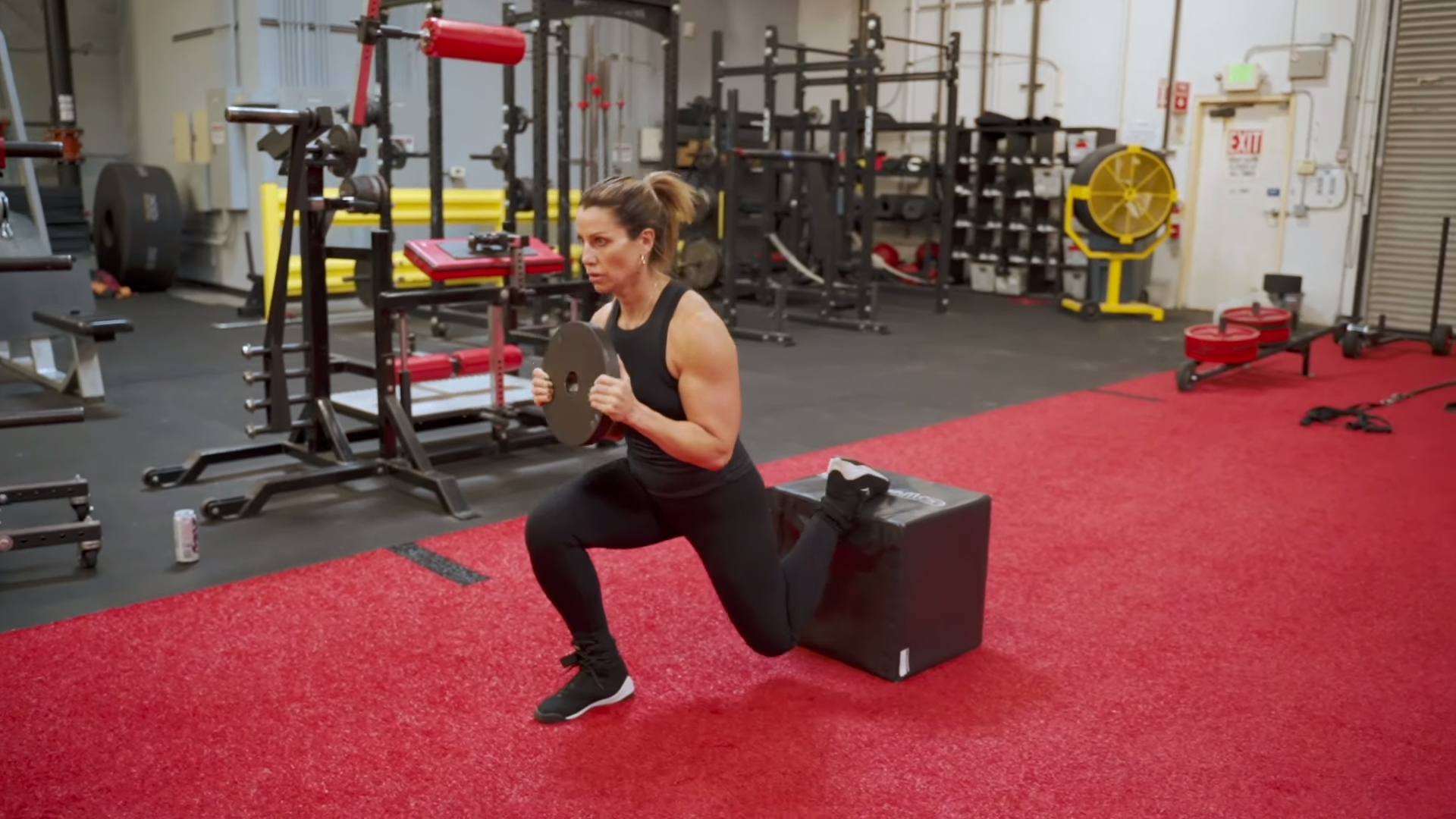
One aspect of power that many fighters overlook is their relative strength. Relative strength is the amount of force you’re able to produce relative to your bodyweight.
An example of relative strength is two guys who weigh the same having a push-up contest. The guy who does more push-ups has more relative strength. Another example is two guys who weigh the same repping out 315 on back squat. The guy who performs more reps has more relative strength. A third example is two guys who weigh the same competing in a max vertical jump test. The guy who jumps higher has more relative strength.
And that’s the key here.
Relative strength is the main difference between bulky powerlifters and athlete who still lift a ton of weight, but can also leap 35+ inches off the ground, throw knockout punches, explode for a sub 4.4 40-yard dash… I think you get the idea.
In less words… Relative strength can be the bridge to more power and explosiveness.
And building relative strength is a good way to increase your punching power at home.
More than that…
Relative strength can increase your stability, balance, movement quality, and play a role in preventing injury.
Below, I want to share three lower body exercises that can increase your relative strength. Plus, I’m going to share how you can manipulate them to see more carryover to your punching power.
Rear Foot Elevated Split Squat
The rear foot elevated split squat is one of my favorite movements to use in the gym, whether it’s weighted or bodyweight. The reason is, this movement packs a punch, and brings a storm of benefits to the user. Rear foot elevated split squats can bring qualities like strength, balance, stability, and even power. Plus, they’re a unilateral movement… Which means they can hammer away at left to right muscle imbalances.
Here’s How to Perform the Rear Foot Elevated Split Squat:
- Place the top of one foot on a bench. The other should be flat on the ground
- The knee of the leg that’s on the bench should be slightly behind the hips
- From this position, lower down to the bottom position. Make sure the working knee doesn’t drive past the toe
- Explode up
- Repeat for desired reps
Box Step Ups
Box step ups are another unilateral exercise you can use to increase your punching power at home. I like box step ups for bodyweight training because they can be manipulated in a variety of ways to bring different benefits to the user. If you want to increase strength and size, perform them with a controlled concentric and slow eccentric portion. If you want power, perform them rapidly and explosively.
You can also vary the shin angle of the working leg to have different carryover to your sport. For example, if you’re a fighter, you can perform box step ups with a more aggressive shin angle to have more carryover to a takedown. If you were a basketball player, you could stack the knee over the ankle to work on your vertical.
Here’s How to Perform Box Step Ups:
- Start with one foot on an elevated surface like a box or bench
- The other foot should be on the ground
- Place the ankle of the working leg either directly under or slightly behind the knee depending on what qualities you want to develop
- Push off the top leg, keeping the chest up tall and achieving full extension before lowering back down
- Repeat for desired repetitions
Copenhagen With Hip Bridge
Copenhagens work on lateral sling strength and stability, a commonly overlooked quality by almost ALL athletes. The lateral sling helps you control lateral movement and the sling itself consists of the gluteus medius, gluteus minimus, the TFL, and IT band.
Essentially, the lateral sling consists of the muscles that take you from being off center, back into neutral.
And the lateral sling plays a role whether you’re fighting, running, and even when you’re walking.
Here’s How to Perform Copenhagens With a Hip Bridge:
- Lay on your side with your forearm on the ground
- Place your top leg on top of a bench or box. The other leg should be extended straight underneath the bench
- Drive the top leg into the bench to lift the hips off the ground and get into side plank position
- Simultaneously drive the bottom foot into the top foot
- Repeat for desired reps on both sides
How to Manipulate Your Bodyweight Training to Increase Your Punching Power At Home
Alright, so how do you manipulate normal, boring old bodyweight exercises to increase your explosiveness at home?
There’s a barrage of different ways. One way is to use tempos.
For example, eccentric tempos can be used to improve your capacity to absorb force. If you don’t know, every time you go to throw a punch, go for a takedown, or throw a kick, you absorb force from the ground. The more force you can absorb, the more force you can produce. So it makes sense that a fighter would want to improve his force absorption, as it would inrcease his punching power.
Another example, isometric tempos can increase motor unit recruitment. If you don’t know, whenever you perform any movement, you recruit motor units. But chances are, you’re not recruiting the largest, fast-twitch motor units every time you move.
Luckily, you can condition your body to recruit larger, fast-twitch motor units by using isometric tempos. When you use isometric tempos, the initial motor units recruited for movement fatigue. When this happens, larger motor units are recruited. And over time, these larger motor units are routinely recruited first, resulting in faster, more powerful movement.
And this is exactly what I do in Body Armor.
I use tempo bodyweight movements, along with other modalities I use with my world-class fighters, to elicit power, strength, stability, and size gains with JUST bodyweight training.
And this approach has routinely created INCREDIBLE results.
For example, check out Edgar.
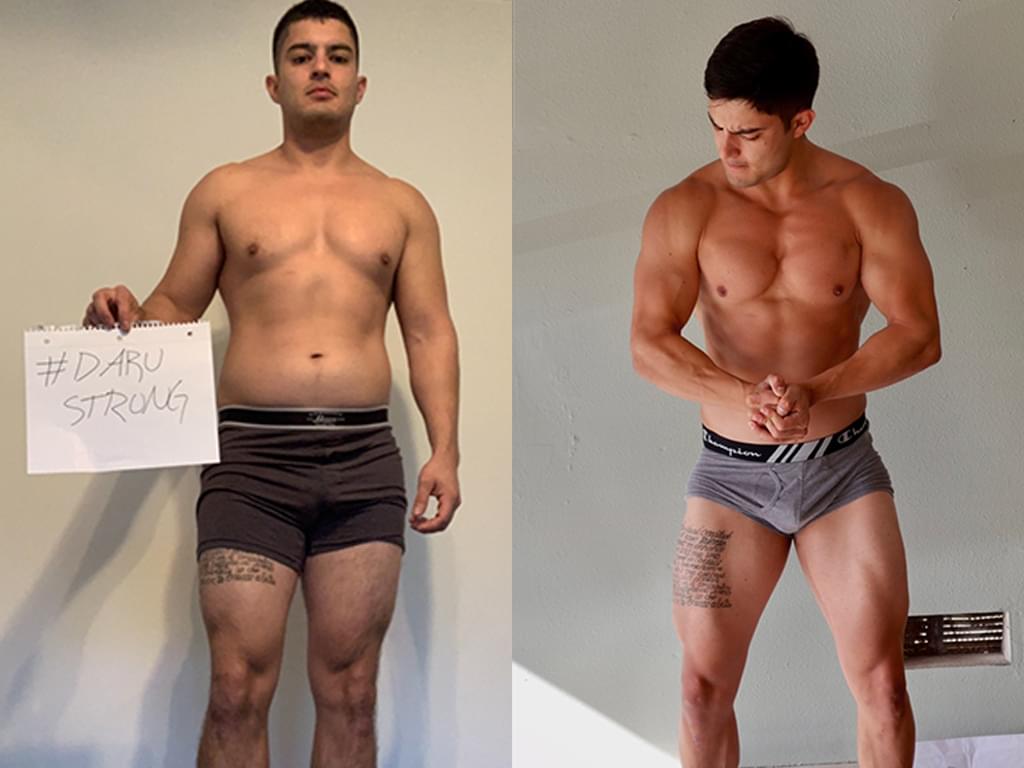
Before Body Armor, Edgar had muscle. But it was covered by a layer of fat.
After just 90 days with Body Armor, all of that fat melted off Edgar, and now he walks tall looking like a Hollywood Celebrity who can perform like a world class fighter.
This is just one drop in a sea of examples of what kind of results Body Armor can create.
If you’re interested in transforming with Body Armor, check out this link. It’s a special, blog-only link for half-off of Body Armor.

